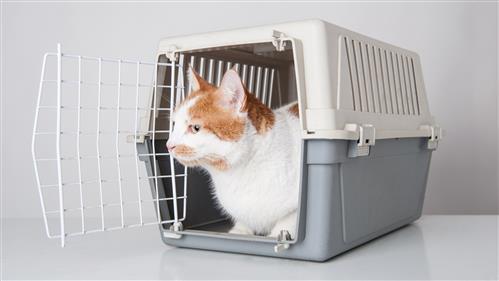Most cats love having the opportunity to play outdoors, but yours may be an exception. Some cats live in fear of the elements, while others have simply become accustomed to indoor life. If you’d like to give your new cat the chance to spend more time in your yard, try training him using the steps below. Before long, you may even be able to install a cat door to let your feline friend explore your yard whenever he wants.
Why Some Cats Prefer the Indoors For some kittens, indoor living is all they’ve experienced in their young lives. Other cats have a learned fear of the outdoors, whether due to a dangerous experience or an encounter with another animal. If your cat is adopted, he may have spent time on the street. If you think your cat may be afraid of the outside world, take ample time to complete the steps below.
You are watching: How to Train Your Kitten to Be an Outdoor Cat
Read more : Landscape Lighting in Rochester, NY
Starting the Training Process Before you begin, consider the following checklist to make a smooth transition to the outdoors:
- Adapt to Indoor Living First: Before giving your kitten time outside, make sure he is fully acclimated in the home first. Even with more time spent outdoors, remember that he’s still a member of the family.
- Get Microchipped: If considering outdoor playtime, make sure your cat has a collar and tag in case he gets lost. Or better yet – ask your vet about a microchip.
- Update Vaccines: Outdoor living may bring your cat in close contact with other animals, so make sure he’s protected against rabies and similar diseases.
- Establish Boundary Points: Put up a fence or create a boundary line from stones or flags so you can train your kitten not to leave the perimeter.
Step by Step Follow the below steps to acclimate your cat to your yard:
- Step 1: When you begin, use a harness and leash to prevent your pet from running off. Walk your cat into the yard using the leash, and let him explore and sniff at his own pace. Every so often, pick him up and address him in a firm voice to establish your control. If your cat tries to run off at any time, try calming him with physical affection. Take the kitten inside if he gets too jumpy, and remember to always use treats as rewards once you’re in the house. This creates positive reinforcement for returning home after his time spent outdoors.
- Step 2: As your kitten becomes more comfortable outside, you can let go of the leash during your walks in the yard. Continue using physical and verbal commands, as noted above, to extend your control. If he attempts to cross any boundaries, say “No!” in a firm voice and direct him back in-bounds.
- Step 3: Over time, you’ll be able to stop using the harness and leash entirely. Then you can test your cat by hiding from view to see if he continues to obey yard boundaries when you’re not around. If he starts to stray, use loud noises or similar scare tactics. Eventually, your cat will learn not to leave the confines of your yard, though it may take several months of day training.
Read more : Irrigation Without Irritation: 3 Easy DIY Plant Watering Systems – Plants for All Seasons | Since 1973
Once your kitten can be trusted to stay outdoors without supervision, you may want to install a pet door in your home. Pet flaps give your furry friend the option to come and go as he pleases, offering access to mental and physical stimulation, even when you’re not around to play. Shop our selection for resilient pet doors in any size. For more information about our doors and how easy they are to install, call us at 0414 922 751.

Source: https://gardencourte.com
Categories: Outdoor
